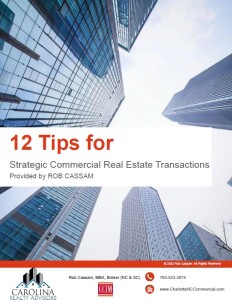In this issue
- Commercial Condo vs. Freestanding Building
- Negotiating The Sublease
- Unusual Real Estate Properties
- Things To Check With A Ground Lease
- Extra Income From Campus Apartments
- A Step-Down Rental
- Selection Of New Tenants
Which is the better investment — a freestanding commercial building or a commercial condominium within a larger complex? Each has its own unique set of attributes, and so the answer really depends on the needs, goals and characteristics of the investor…..(more)
With changes in business strategies, a major existing tenant wants to sublease all or some of their rented office space to eliminate some locations and shrink operations in others. In this situation, the problem for landlords is whether it is a better strategy to enforce lease restrictions against subleasing or to work with tenants on the theory that the sooner cheap sublease space is filled, the better for all. (In addition, another problem could be whether landlords should insist on sublease restrictions in new leases being negotiated now.)……(more)
In many metropolitan areas, commercial land for development is in very short supply. Developers are converting older warehousing to shopping areas, demolishing existing buildings to build new projects in areas in transition. However there may be many hundreds or even thousands of unusual parcels of property that have been overlooked. Many are ready for commercial development close to downtown areas, suburban commercial developments, and densely populated areas. Owners of many of these properties consider the property as “surplus” and have not considered development.
Some of these properties are in the inventories of city, county and state ownership and are surplus parcels that were unused in street, highway and freeway development. Others are owned by railroads….(more)
Landowners may choose the ground lease as a way to benefit an easy and risk-free investment vehicle and as a way to secure the long-term appreciation of the property. Sometimes a ground lease can put the lessor at risk. That is because the deal centers on the concept of sharing economic returns. The lessor becomes a partner of the lessee because the total rent is usually determined by the lessee’s net operating income or net cash flow. If the lessee does well, the lessor does too. However, if the lessee’s business is a loser, so is the lessor….(more)
When an owner has an apartment property near the campus of a University, there are particular problems. The competitive situation dictates that leases be offered for one semester of nine and a half months. A twelve-month lease for students is virtually unheard of. That means there are lots of vacancies as soon as final exams have ended. (This does not apply to a few University communities where there is always an apartment shortage. In those few places, the student must lease for 12 months or have no lodging.)…..(more)
Tenants understand the need for step-ups in their leases because they recognize the inevitable upward trend of costs. There is no reason for elaborate set of definitions in the lease. The lease simply needs to spell out in a schedule the applicable period and the rent to be paid during that period…..(more)
The property manager provides the tenant applicant with the lease application which must be filled out for the interview. A leasing agent may assist during the review process, but the final selection of tenants is ultimately the property manager and owner’s responsibility. All leasing personnel should be informed that the company does not discriminate on the basis of an applicant’s race, sex, color, creed, or national original….(more)




